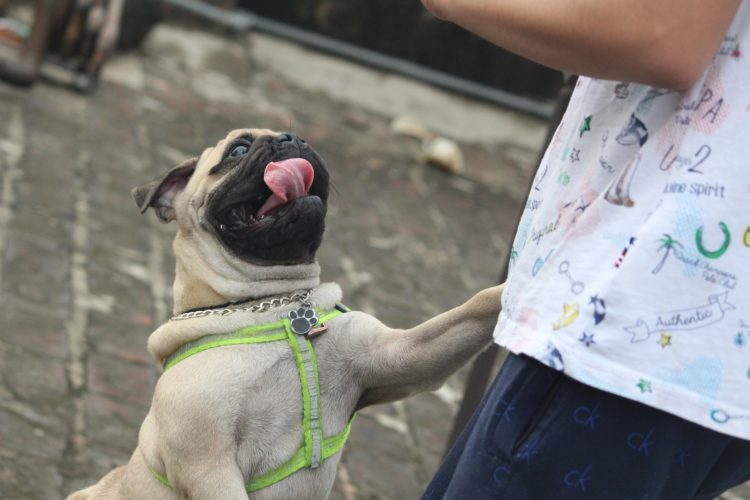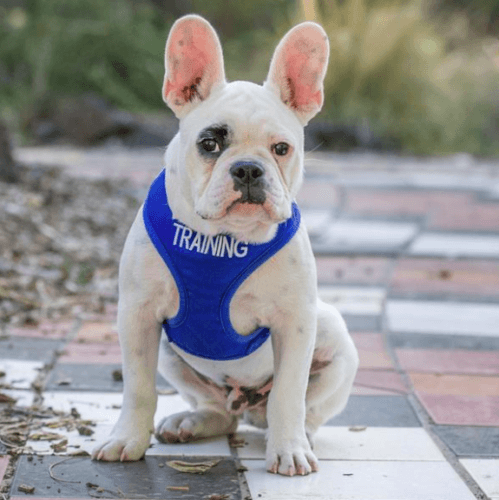Annoying Dog Behaviours and Dog Training Issues
Annoying Dog Behaviours and their Solutions: Summary
- Annoying dog behaviours such as jumping up, pulling on the lead, humping (mounting) and trying to escape are common but unwanted.
2. Management of these undesirable behaviour is important. For instance having suitable fences or keeping your dog on a lead so they cannot jump up.
3. Long term solutions involve satisfying your dog’s needs and also training them to have desirable behaviours.
1. Pulling on the lead
Most dogs are simply excited to be going on a walk. Some jump pull when they see another dog or have something to sniff. Most lead pullers have never been taught to walk by the owner’s side.
2. Escaping
Dogs who escape tend to be bored at home. They venture outside the home for stimulation. Some may also suffer from separation anxiety and would rather be with people. Does your dog try to escape?
3. Jumping up
Dogs who jump are often enthusiastic greeters of people. They jump up to get as close to your face as possible. Most of these dogs have not been taught that four paws on the floor gets rewards like attention. Does your dog appear to enjoy jumping on people?
4. Mounting (humping) behaviour
Mounting is a controlling behaviour performed by some dogs, during play, fights or sexual activity. Some dogs also mount human legs, soft toys or cushion, as a release for energy build up.
Potential causes of all annoying behaviours
Boredom and Anxiety are two common causes of annoying dog behaviour. Ensure your dog is not bored or anxious.
More about boredom.
More about canine anxiety

How to stop annoying dog behaviours
First take a look at our methods of solving behaviour problems, which involves identifying a cause, working on management techniques and implementing solutions. Read more here.
1. Energy outlets for all annoying dog behaviours
Many annoying or quirky dog habits are a result of your dog’s energy needing an outlet. Provide your dog with appropriate energy outlets and their annoying behaviours should decrease. Vary their walks or make them more regular. Provide training for mental stimulation and feed them using food-releasing toys.
Most annoying behaviours require appropriate energy outlets. The exception to this is dogs who are over-stimulated and suffer anxiety as a consequence. These dogs may be best with calming techniques.
2. Dog Training to improve dog behaviour
Many owners wait on their dog learning new behaviours and it simply never happens. Your dog will not stop jumping up or pulling on a lead until you teach them that there is a better alternative.
Reward your dog for behaving well. Introduce commands as they sit or walk nicely and praise them or give a treat. Make training easy with these tips…
The lazy guide to dog training
Video help with dog training

For specific annoying dog behaviours:
Pulling on the lead
Management of lead pulling behaviour
Managing annoying dog behaviours such as pulling on the lead may involve finding other ways of exercising your dog, such as the off-leash park, if your dog is sociable.
It may help to use devices such as head halters or harnesses, as dogs are less likely to pull when these are in use. Have them fitted correctly and practice using them at home before you use them on the street. Don’t forget to praise your dog for walking calmly.
Remember management strategies don’t address the cause or provide a permanent solution. They just help you manage the problem behaviour.
Solutions to lead pulling
The best solution to walking your dog comfortably is to train them. Every little bit of time you invest will bring you an easier dog to walk!
Walk your dog in your backyard, around your home or in uninteresting areas, until they learn to walk without pulling. Give a walk command and praise them.
With time, take them out into the streets. This may result in pulling on the lead again, so remember to issue a command. Or try this on your way home from the park, when your dog is tired.
If this is all too difficult, ask a dog trainer to show you how.
Escaping from home
Management of the escapee
To prevent your dog escaping, adequate fencing is the best solution. Build it high and underground, if necessary. Double fences, floppy tops and ensuring no climbing spots or furniture nearby will help.
Ensure your fences and gates are secure. Read these tips about fencing and about escape artists. Also that your dog’s ID is up to date.
If your dog is lost, read these tips.
Solutions to keep your dog at home
Look at why your dog may be bored or anxious and address these issues. Prevent boredom by giving your dog exercise and mental games to play. Use food-releasing toys to occupy your dog. Rotate toys around to keep your dog interested. Hire a dog walker, use doggy day care or have a friend visit.
If your dog dislikes being left alone, follow the tips for separation anxiety here. You dog needs to be gradually taught to be left alone.

Jumping up
Managing the jumping behaviour
Do not allow your dog to jump up. It is one of the most annoying dog behaviours for other people! Put your dog on a lead. If your dog is excitable and you are arriving home, try throwing a ball or a toy for them, to use up some energy. Set up agility courses in your garden to give your dog opportunity to jump.
If your dog does continue jumping on people, try to ignore them by not giving physical, verbal or eye contact.
Stop jumping up permanently
Two main things to do here:
1. Appropriate energy outlets
2. Training with rewards for staying on the ground
You may also like to teach your dog an alternative behaviour such as shaking a paw, to jump up on command or to wait on a mat.
Mounting behaviour (Humping)
Managing the unwanted humper
To prevent unwanted mounting behaviour, you need to take charge of your dog’s behaviour. Keep them on a lead, even within your home. Then they cannot mount. If they have already started to mount another dog and you cannot safely intervene, you will need to distract your dog and call them to you.
If your dog mounts cushions or other inanimate objects, you may just like to ignore this behaviour. Generally, it’s your dog’s way of releasing pent-up energy or it could be a comforting behaviour, a habit that has formed.
Often dogs use this behaviour as a way of getting their owner’s attention. Be sure you do not give it any attention, including shouting, laughing, physically handling your dog or even looking at them. Instead, distract them before they begin.
Solutions to prevent humping
If mounting behaviour is not really a problem for you, your dog or others it may be best to leave it alone.
If it disturbs you, step in with a distracting activity prior to the mounting behaviour beginning.
Or give your dog something more appropriate to mount, like a toy.
Ultimately you need to address your dog’s energy outlets and provide more physical and mental exercise.
If your dog is mounting to relieve stress, however, you may need to try some calming techniques or talk to your vet about anxiety medication.
This annoying dog behaviour can be reduced with patience, management and training.
Frequently asked questions about annoying dog behaviour
Why does my dog pull on the lead?
Dogs pull because they want to move faster and because it is self-reinforcing. You need to train them to walk at your pace by reinforcing this behaviour. Give them a treat when they walk beside you, practising at home.
How can I stop my dog jumping up?
If you dog likes to jump up, manage and control their behaviour by using a lead. Reward your dog for keeping four paws on the floor and train them to do this when they are calm. You could also train them to jump up on command.
How do I stop my dog wanting to escape from home?
Check that your dog is not bored or anxious at home alone. Give your dog a variety of activities to do and check your fences are secure.
How can I stop my dog humping?
Dogs will often hump or mount when they have a build up of energy. Give them appropriate ways to burn off energy and control their behaviour using a lead. If they annoy other dogs or people, it is up to you, their owner, to control their behaviour.
Is humping a sexual behaviour?
Humping or mounting behaviour is part of the sexual behaviour repertoire but it is also used during play or as a release of energy.
Do female dogs hump?
Both male and female dogs can hump or display mounting behaviour. If you don’t wish your dog to hump, then you need to control this behaviour to prevent it but also give your dog lots of other activities to use up their energy.
Why are dogs so annoying?
Dogs are simply being dogs. It’s humans who find their behaviour annoying at times. Most dogs are opportunistic and will take advantage of any situation where there is something they want. They will jump up if they want to be close to you. They will dig the garden if it seems like fun.
If you find their behaviour annoying, you must train them to do a different behaviour. Always reward the behaviour you want, to reinforce it. Dogs will repeat behaviours that they are rewarded for.
Here’s Dr Jo doing some basic training with a dog…
More dog behaviour articles that may help with training issues and frustrating behaviours
Basic commands used in dog training
How to stop your dog from jumping and climbing the fence
5 Tips to prevent your dog from getting lost
Things Dog Trainers Wish Dog Owners Would Do
Puppy training: Your basic guide
Quirky dog habits
Canine teaching and learning styles
Videos to help train your dog
Pet Problems Solved Podcast and Video Series